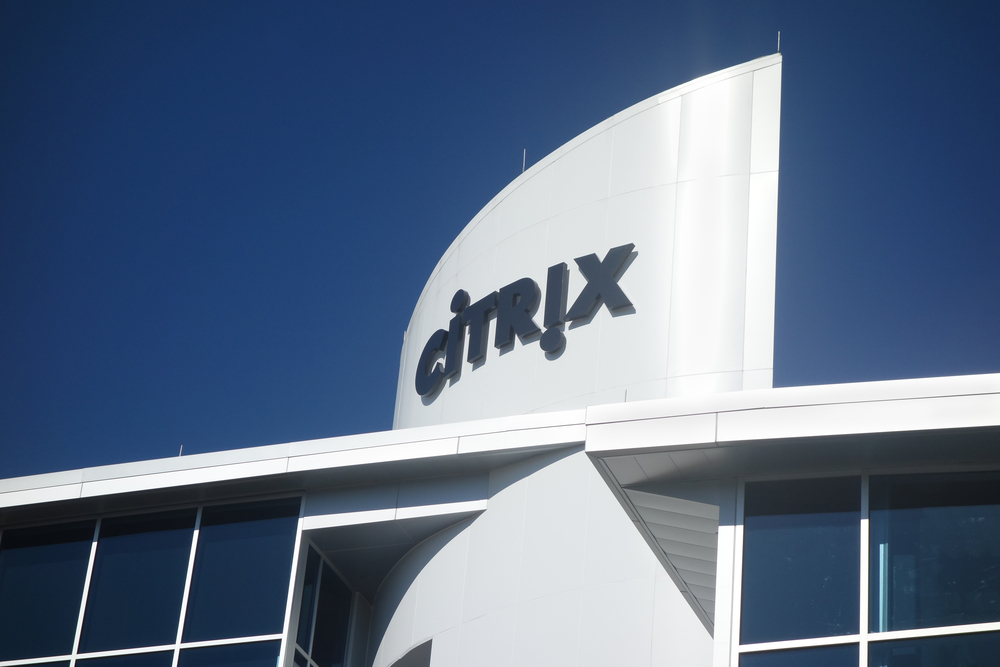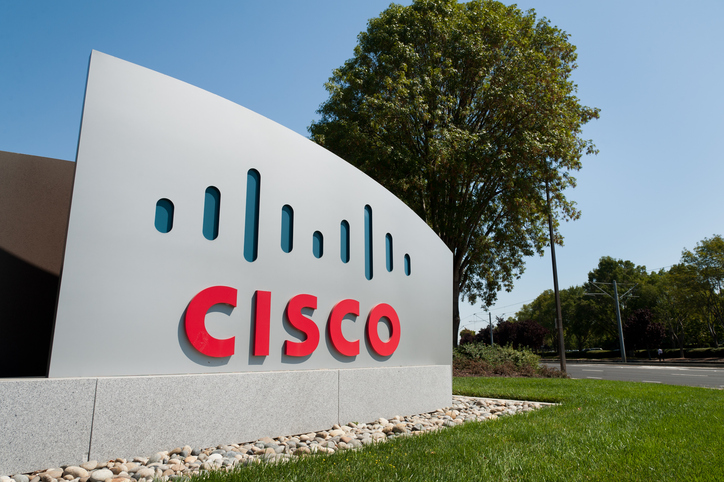Citrix is renowned as the pre-eminent supplier of thin-client computing. It counts all of the Fortune 100 and a significant proportion of the Fortune 500 companies among its customers. And on the back of that, annual revenues are heading towards the $1 billion mark. But CEO Mark Templeton has a far grander vision for the company, one that would position it to solve some of the most pressing problems for today’s CIO. Can Citrix really hope to meet such lofty ambitions?
Citrix is best known for MetaFrame, a product that enables organisations to run desktop applications on servers instead of on client systems. That is more or less where most people’s knowledge of Citrix stops.
Templeton plans to change that: he wants to re-invent Citrix as an “access infrastructure” company – providing ways for employees to gain access to resources and people wherever they are, whatever device they use.
In turn that should help CIOs make better use of their budgets, by reducing the burden of managing PC estates. Templeton also promises Citrix’s access infrastructure will be secure and ease the provision of services to mobile and home workers.
Reputation building
Despite MetaFrame’s reputation and widespread recognition, Citrix actually stopped marketing the brand in 2003 – the product was re-named as Presentation Server, although the new moniker shows little sign of gaining acceptance in the market. Such deep customer loyalty to the MetaFrame tag underlines Citrix’s challenge in re-inventing itself: it is a company with huge reliance on a single well-known product, and one with a long history.
Citrix was born in 1989, founded by a group of former IBM employees. It initially developed a product for the IBM OS/2 operating system, using technology licensed from Microsoft, which allowed IBM’s home-grown PC operating system to support multiple users.
A switch in strategy in 1993 saw the company develop the idea of using PCs as terminals for server-based computing. The company continued to grow slowly: its revenues for 1996 were just $44.5 million. But after broadening its product range, launching a channel network and partnering with Microsoft, growth rates rapidly increased, with revenues leaping to $248.6 million by 1998. Citrix is now on course to hit $1 billion in revenues for its fiscal 2006.
The Microsoft partnership remains the most important of Citrix’s 3,000-plus relationships. The company’s 1997 deal saw some of Citrix’s technology make its way into Windows 2000 Server, giving Citrix royalties and in-roads into organisations that liked what they saw in ‘Terminal Services’ but knew they wanted more. Citrix extended its Microsoft pact for a further five years in December 2004.
The relationship with Microsoft has helped Citrix gain a foothold in a large number of Blue Chip accounts. And it has increased its presence, getting involved in a projects ranging from global consolidation of IT systems to outsourcing.
One such customer is law firm Clifford Chance, which has 27 offices around the world. The company adopted Presentation Server in late 1999 as a remote access solution, but the software now provides a range of services to 7,000 employees. The majority of users run Microsoft Office on the server, where their documents are also stored and then work on them remotely from their offices, from home or when hot-desking. Since the data is on the server and never downloaded, it stays secure.
“Over the last 18 months, we’ve consolidated infrastructure, with some of the smaller offices using Citrix as a thin client to get access to the larger hub sites. Part of that is managing costs, since we don’t want the same size and level of infrastructure. Part is business continuity and disaster recovery, since we can’t have disaster recovery sites for 27 offices.” says John McKeown, director of enterprise architecture for Clifford Chance.
This approach can also reduce IT support levels, although there is an initial training overhead: “Lots of people are either server or desktop people. It’s a different type of mindset. You need to bring them together,” says McKeown.
“Bandwidth can be a problem if you’re printing from a remote terminal and you’re trying to suck the data down from the server so you can print locally.”
Michael McCullen, Asta Development
But while some applications are easily migrated into a Presentation Server environment, latency can be problematic for others; users can be left waiting for results for intolerable periods.
Citrix has been working continuously over the years to reduce latency, but certain graphics-intensive programs can still face this issue over large distances. Boeing had to work extremely closely with Citrix’s engineers in order to make its CAD systems work at an acceptable speed for its Australian users and it is still continuing with efforts to improve performance.
Yet at closer distances, even geographic information systems (GIS) software – notoriously graphic intensive – can be made to work with acceptable performance. Hampshire County Council provides services to 14,000 users via Presentation Server, with roughly 80 of those using ESRI’s ArcView GIS software. According to senior IT consultant David Brown, the council tried a client/server approach at first. “We tried to deliver GIS over the WAN, but even over 2Mbps that gave us an unworkable response time – up to 15 minutes for a screen. But over a thin client, it was more or less the same as if you were there.”
Michael McCullen, MD of project management software developer Asta Development, has deployed his programs in a number of Citrix environments, including housing developer George Wimpey. “They use it to allow the business units to access the software. They don’t have to administer the software in these units, which are all around the country. The IT guys are excited because the software’s all in one room.”
To make the software compatible with Citrix took one minor change. But printing, a bugbear for the system for some time, continues to prove an issue. “Bandwidth can be a problem if you’re printing from a remote terminal and you’re trying to suck the data down from the server in order for you to print locally.”
Uneasy alliances
But while the relationship with Microsoft helped Citrix establish its credentials, it is that partner that now presents Citrix with its greatest threat.
“There is a belief that Citrix and Microsoft are at odds with each other, but I don’t think that’s anything to do with what Citrix and Microsoft have done to each other. It’s because of the way Microsoft treats its other partners,” says Mark Margevicius, vice president and research director at Gartner.
Citrix and Microsoft have an “interesting” relationship because of their different licensing agreements, argues Margevicius. Whereas Citrix allows organisations to buy licences for only the maximum concurrent number of users, Microsoft requires licences for all the users that will ever access the server. As a result, “for every dollar generated in revenue for licensing by Citrix, it generates an additional 75 cents that goes directly to Microsoft. [In 2004], in excess of $300 million was generated by Citrix for Microsoft without Microsoft lifting a single finger.” Little wonder then, Citrix has won Microsoft’s Global ISV award in two out of the three years it has been awarded.
Despite the closeness of that relationship, Microsoft potentially presents the biggest threat to Citrix, as the software titan develops its Terminal Services product. “People are using Terminal Services more. We’re also seeing more people that need just straight web apps,” say David Angwin, marketing manager at thin client manufacturer Wyse Technology.
Microsoft plans to release upgrades to Terminal Services, codenamed RAIL (remote application integrated locally), in its ‘Longhorn’ release of its server platform. Ironically, many of the improvements will be likely to have come from Citrix, via the recent five-year licensing agreement with Microsoft. This has the potential to undercut Citrix even further at the low end and to make encroachments into larger enterprises.
Citrix has reacted to the threat from Microsoft, launching its own low-cost competitor to Terminal Services, Citrix Access Essentials, in 2005 – its first product aimed specifically at SMEs.
The acquisition of the NetScaler web accelerator software should help it work its way into the web applications market.
At the high end, Citrix has been largely unchallenged. Its main competitor was Tarantella, but Gartner analyst David Friedlander says that the company’s financial uncertainties caused companies to be wary. Sun Microsystems’ 2005 acquisition of Tarantella will have gone some way to alleviating those concerns. However, Sun is liable to deploy its acquisition as a bundle with its Sun Ray terminals and its own servers, rather than on Citrix’s mainstay, Windows Server 2003. Friedlander predicts that Sun will almost certainly discontinue the Windows version of Tarantella altogether, making the clashes between Sun and Citrix less infrequent than they may have been.
Citrix has also decided to diversify. In 2002 Templeton decided Citrix should no longer rely on server-based computing. This marked the beginning of its conversion to “access infrastructure”. It is a market Citrix can quite justifiably claim to lead, since essentially it is the only company in this whole market – although Cisco and Juniper are circling.
"Lots of people are either server or desktop people. You need to bring them together."
John McKeown, Clifford Chance
Templeton admits he hopes the company’s association purely with thin clients will “die off completely”, but expects it will be some time before the access platform strategy pays off. “Platform strategies take years to play out. Right now the platform means a one-stop shop for everything you need to deliver applications in a controlled, secure, managed way and have a collaborative experience.”
Gartner’s Margevicius says that the access message is failing to get through, however. “They’ve had [it] for over two years, and it hasn’t made any noise and it’s had zero impact with customers. It’s a way in which they can put together all their products on a single page, but there’s no real underlying integrated technology or architectural differences about what they’re doing. It’s just one message that doesn’t resonate very strongly with customers that I speak to.”
Citrix’s financials suggest that even if the overall message is not getting through, customers are still finding plenty within the product range that meets their needs. Citrix’s growth in software revenues continues to grow at around 20% thanks to the additional revenues from its SSL and web accelerator divisions. Its online services division is growing even faster.
Ultimately, Citrix’s ability to make the transition from a tactical to a strategic supplier and from a server-based computing company to a network and applications management company rests on its current install base.
For while its client roster looks impressive, Citrix’s Templeton knows that it needs to push deeper into those accounts.










